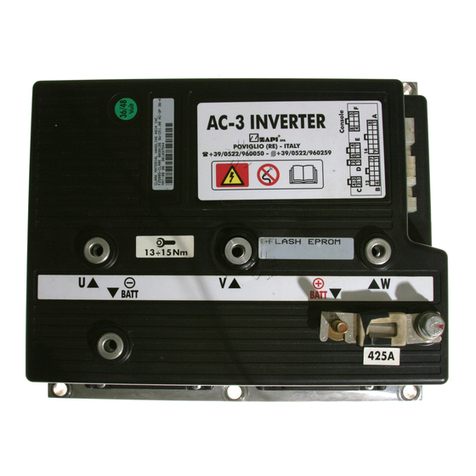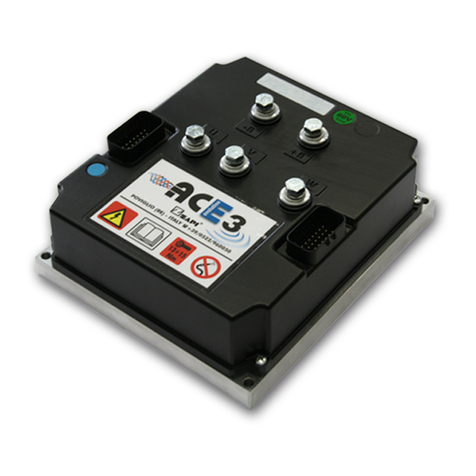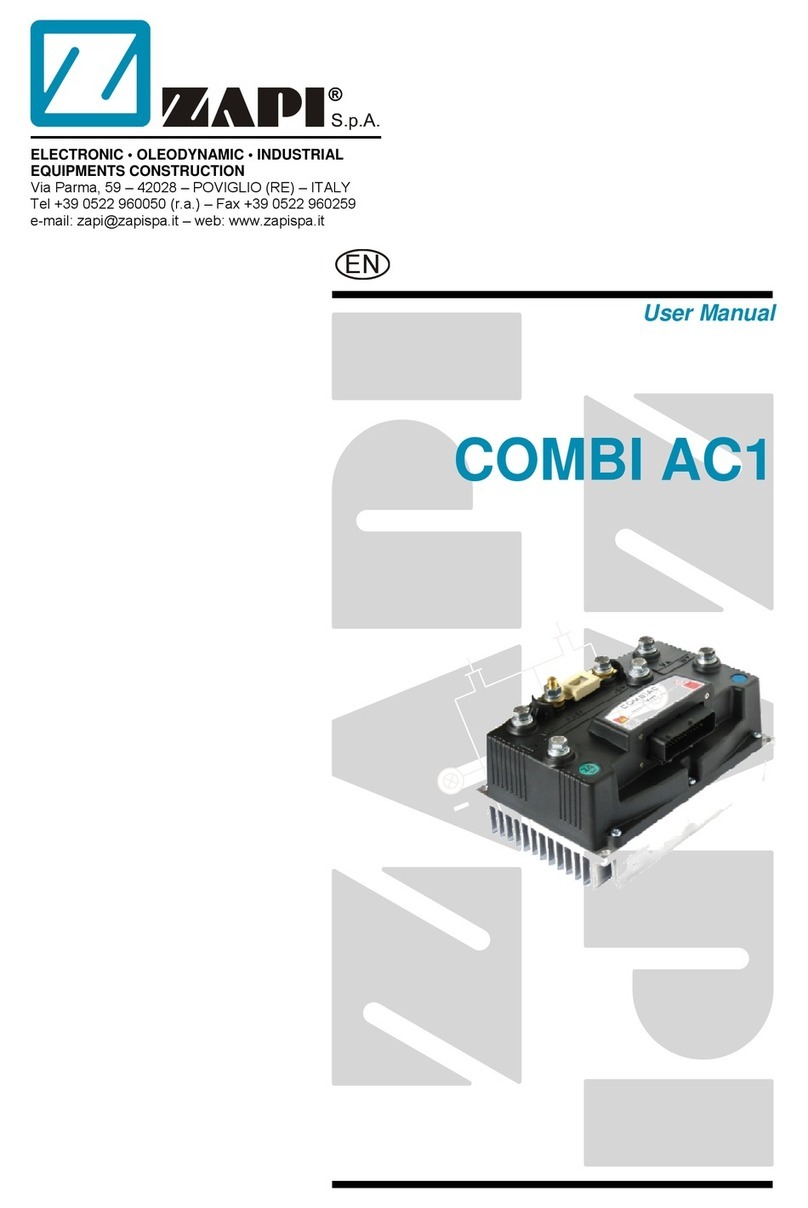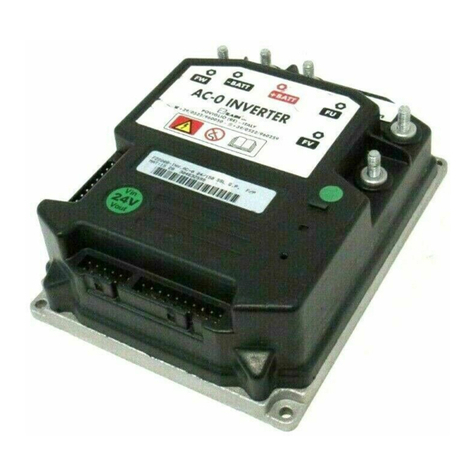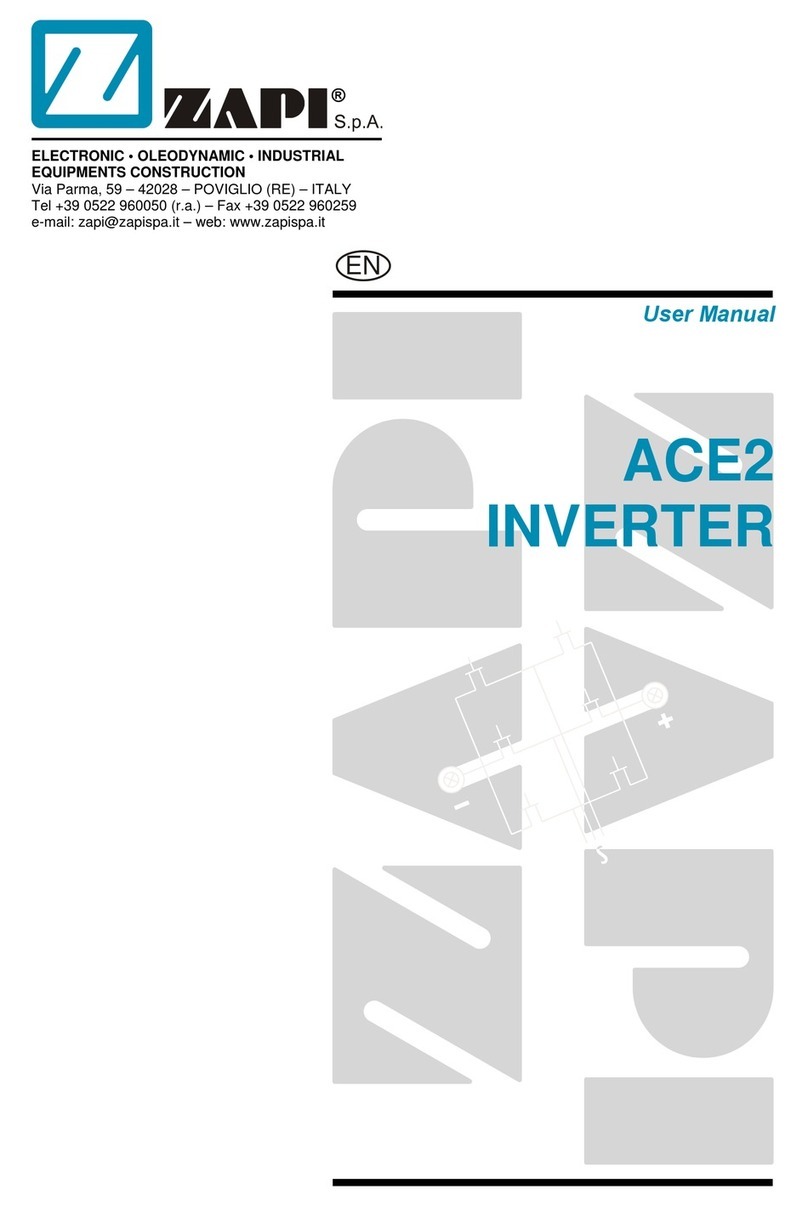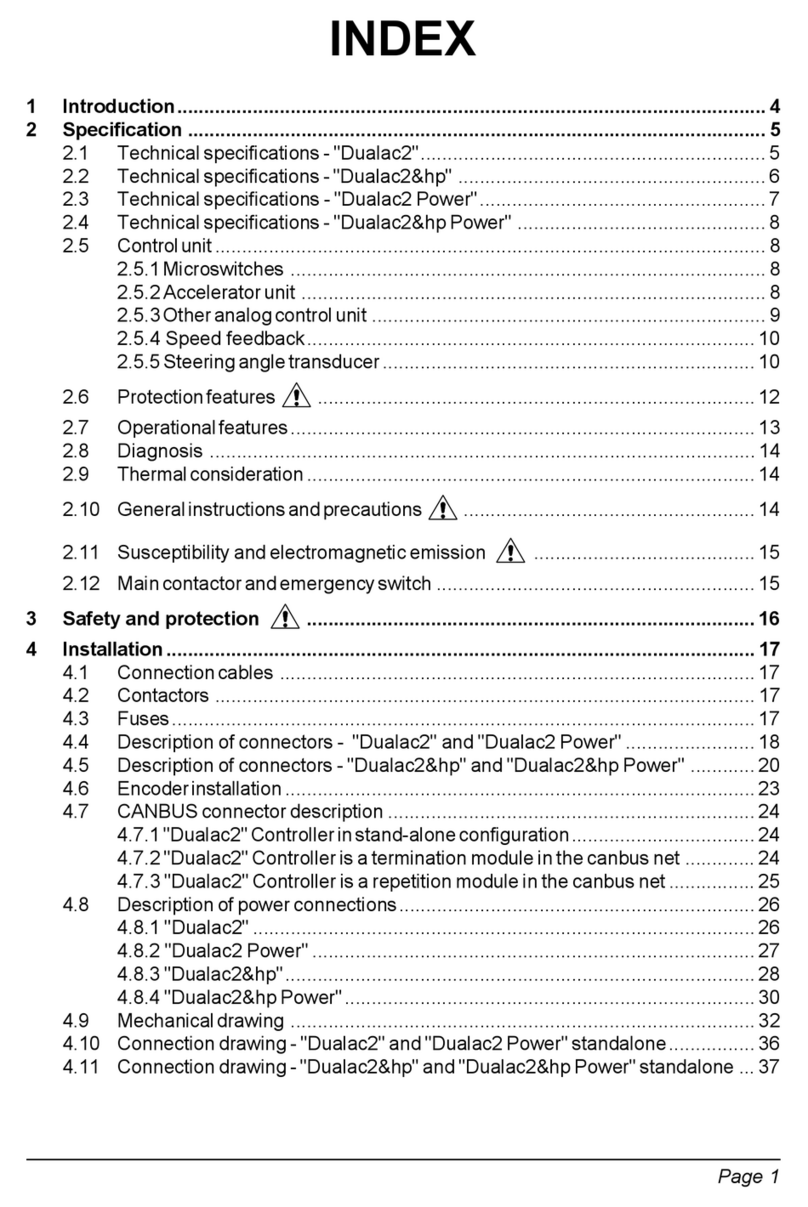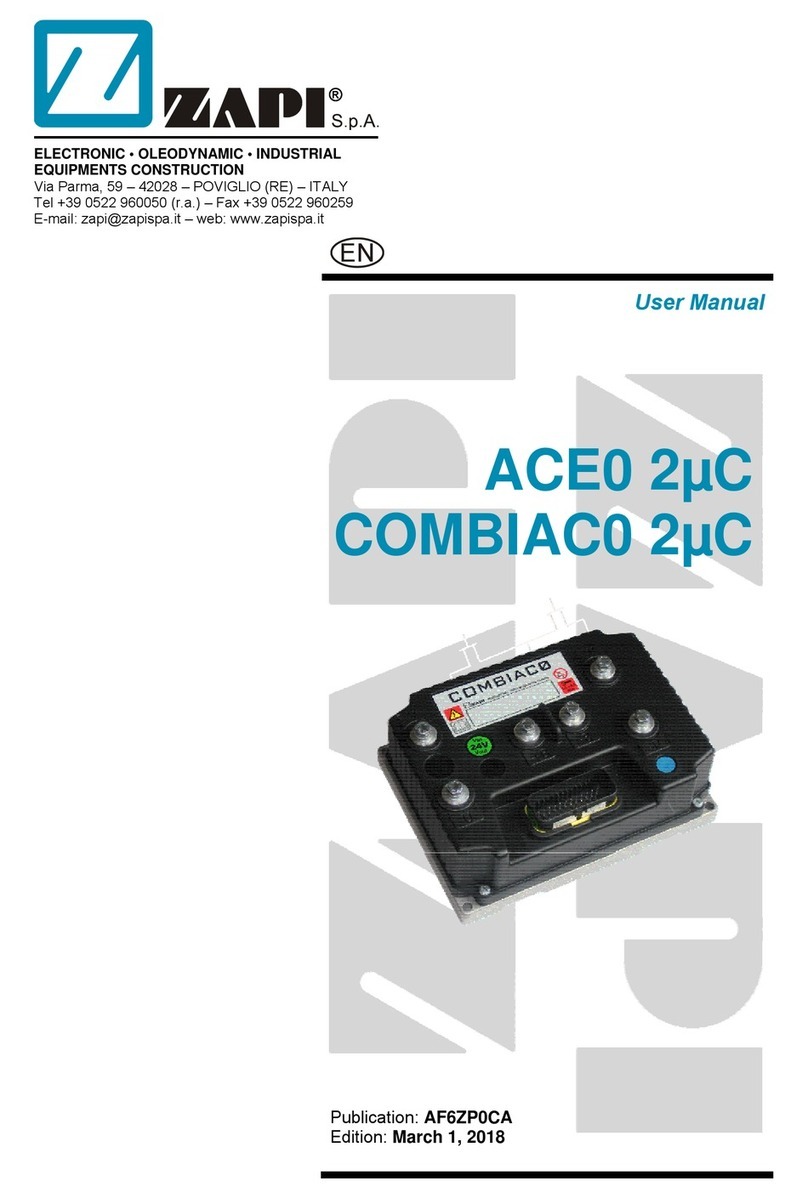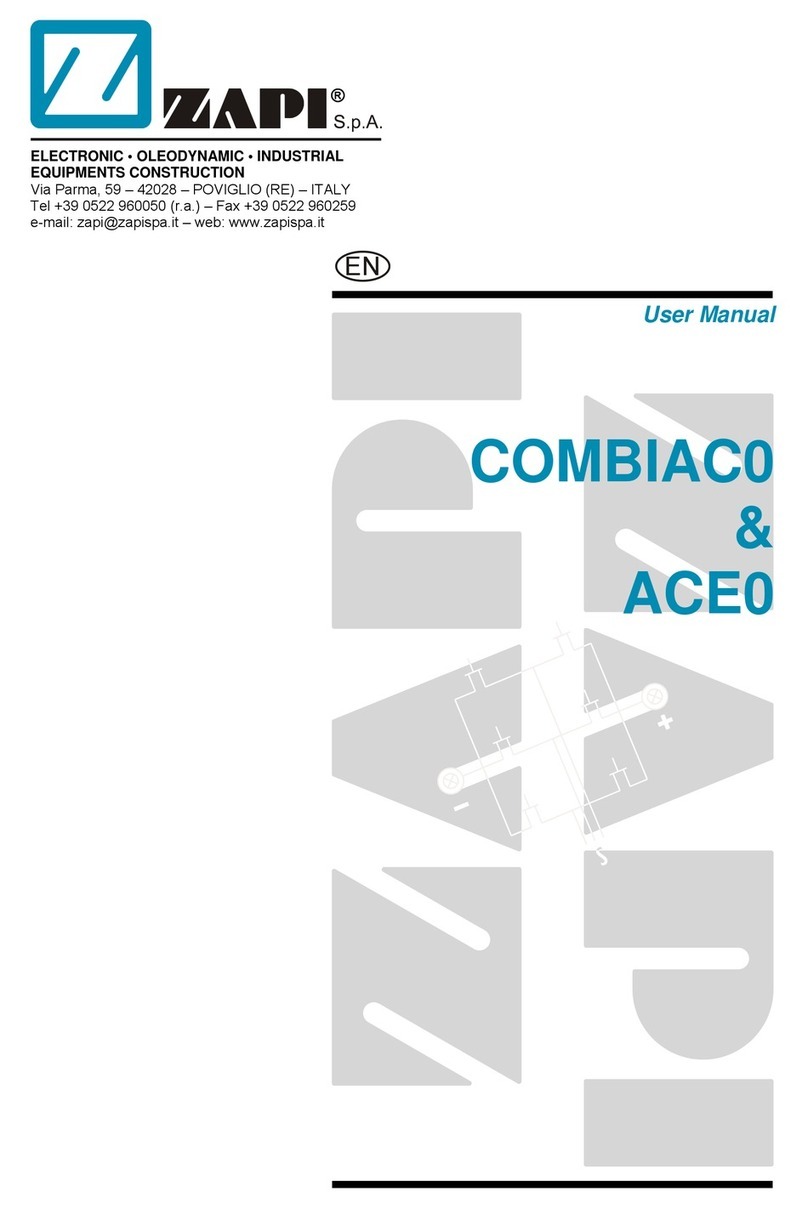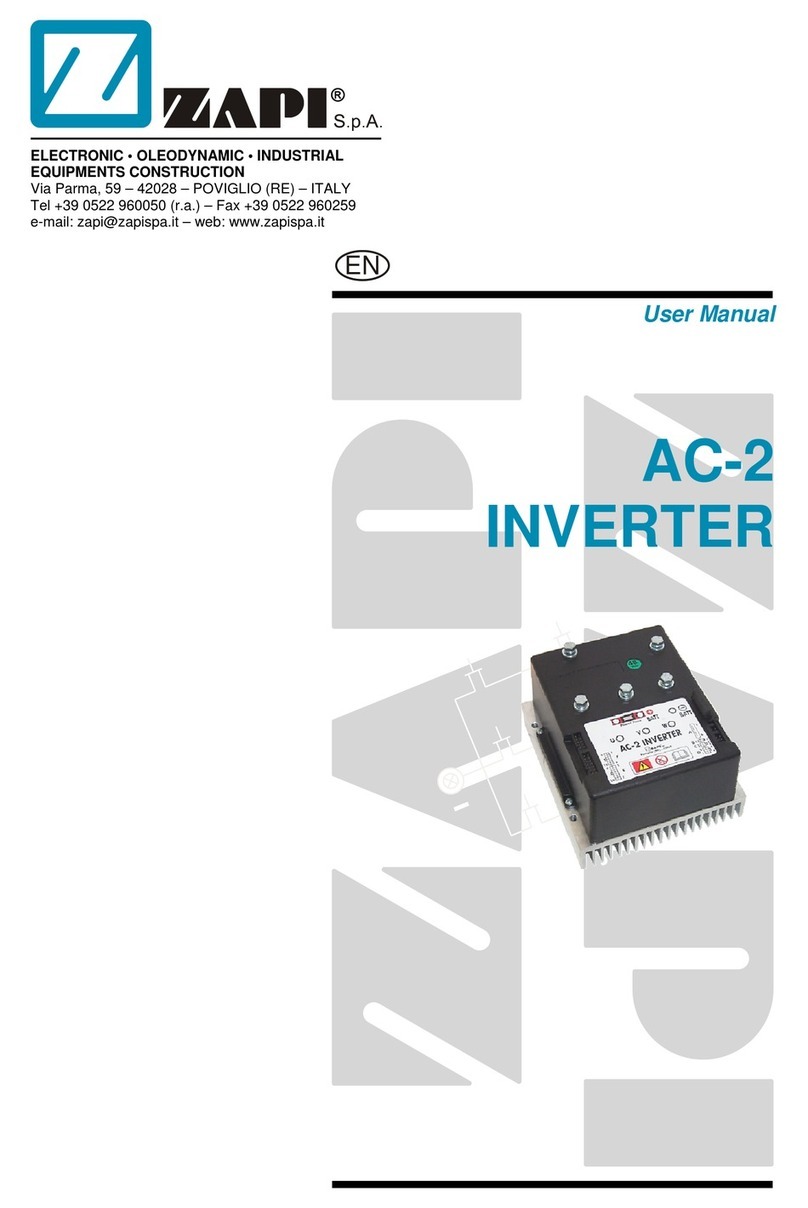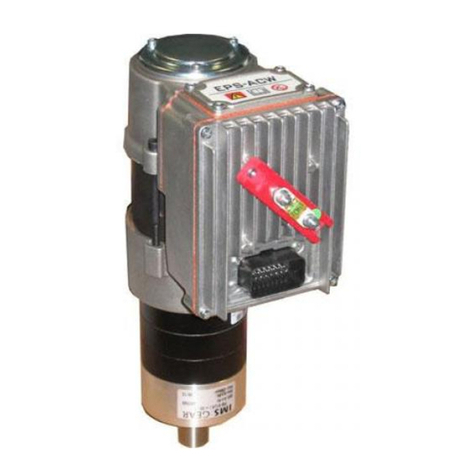
AFCZP0BC – COMBIACX & ACEX - User Manual Page - 3/81
Contents
1INTRODUCTION...................................................................................................................5
2SPECIFICATION...................................................................................................................6
2.1 Technical specifications COMBIACX / ACEX.............................................................6
2.2 Technical specifications COMBIACX Power / ACEX Power ...................................... 6
2.3 Block diagrams........................................................................................................... 7
2.3.1 Traction control.............................................................................................7
2.3.2 Pump control ................................................................................................7
3SPECIFICATION FOR THE INPUT DEVICES FILLING UP THE INSTALLATION KIT......8
3.1 Digital inputs............................................................................................................... 8
3.1.1 DI0 ÷ DI10 technical details – 24 V system .................................................8
3.1.2 DI0 ÷ DI10 technical details – 36/48 V system ............................................8
3.1.3 Microswitches ...............................................................................................8
3.2 Analog unit ................................................................................................................. 8
3.3 Other analogue control unit ........................................................................................ 9
3.4 Analog motor thermal sensor input.............................................................................9
3.5 Speed feedback ....................................................................................................... 10
4INSTALLATION HINTS ......................................................................................................11
4.1 Material overview .....................................................................................................11
4.1.1 Connection cables ...................................................................................... 11
4.1.2 Contactors ..................................................................................................11
4.1.3 Fuses..........................................................................................................12
4.2 Installation of the hardware ...................................................................................... 12
4.2.1 Positioning and cooling of the controller.....................................................12
4.2.2 Wirings: power cables ................................................................................ 12
4.2.3 Wirings: CAN connections and possible interferences............................... 13
4.2.4 Wirings: I/O connections............................................................................. 15
4.2.5 Connection of the encoder ......................................................................... 16
4.2.6 Main contactor and key connection ............................................................ 17
4.2.7 Insulation of truck frame .............................................................................17
4.3 Protection and safety features.................................................................................. 18
4.3.1 Protection features .....................................................................................18
4.3.2 Safety Features ..........................................................................................19
4.4 EMC ......................................................................................................................... 19
4.5 Various suggestions .................................................................................................21
5OPERATIONAL FEATURES..............................................................................................22
5.1 Diagnosis.................................................................................................................. 22
6DESCRIPTION OF THE CONNECTORS ...........................................................................23
6.1 Connectors of the logic............................................................................................. 23
6.1.1 CNA external connector ............................................................................. 23
6.1.2 CNB external connector ............................................................................. 24
6.1.3 CNC external connector .............................................................................24
6.1.4 CND external connector .............................................................................25
6.1.5 CNE internal connector .............................................................................. 25
7DESCRIPTION OF POWER CONNECTIONS....................................................................26
8DRAWINGS.........................................................................................................................27
8.1 Mechanical drawing COMBIACX.............................................................................. 27
8.2 Mechanical drawing ACEX ....................................................................................... 28






